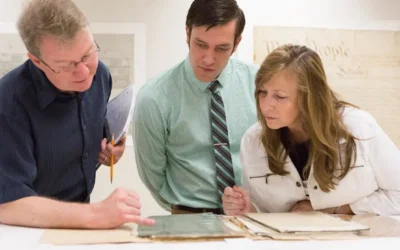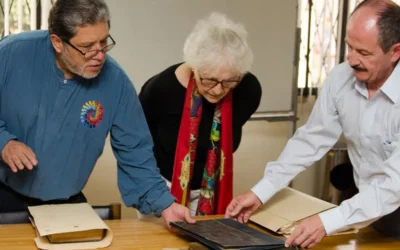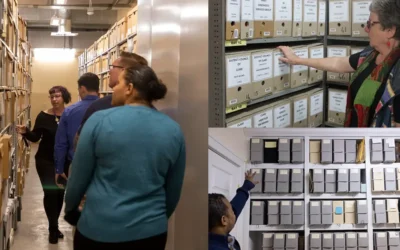The Effect of Technology on Archival Activities
Margot Note
As technology has advanced, so has the effect it has had on traditional archival activities. The digital era has transformed collection development, appraisal, arrangement and description, preservation, and research services.
Collection Development
Archivists face the challenge of receiving materials in formats they may not be able to preserve or make accessible. In some cases, they may be expected to provide access to materials of which they won’t take custody. The archivist may play an advisory role to help the records creator develop recordkeeping systems, but not to arrange for the transfer of records.
Appraisal
Archivists are faced with vast amounts of material, created digitally but maintained in both paper and electronic form. The same series of records may move from office to office and from discrete types of documents to interrelated data systems. These activities make records scheduling and the development of retention schedules challenging to engineer.
The nature of these materials raises issues of assessing authenticity; it’s almost impossible to tell what an original document is. For legal reasons, systems now deal with these questions, but overlapping collections in formats where authenticity is hard to assess still exist.
Arrangement and Description
The range of new media complicates arrangement and description. A single series may be in paper form until a date, then stored as electronic media for a period, and are being created on a computer. It’s the same series but mixed now with other series in a system.
Traditional methods of arrangement and description result in static finding aids that no longer mesh with the fluidity of records creation. There is a movement towards finding aids that separate information about the records creators from details about the records, and towards finding aids that can change with input from staff and users. The purpose of finding aids is both for collection management and use. Do changes in technology mean that the needs of the repository for information about the holdings differ from those of the user?
As archivists re-engineered their finding aids for encoded archival description (EAD), they discussed with the audience for finding aids and whether they were useful for researchers or written in code only understood by archivists. In some respects, EAD has made the playing field more even, because repositories at all levels can adopt standards. It has also created a digital divide between repositories that have incorporated preservation and standards into their operations and those who haven’t.
Preservation
Digital records are fragile and easily manipulated. Without the correct hardware and software, they are unusable. These issues extend to audiovisual formats. Many archives have collections of media they can no longer access. Some items they know about; others are buried in unprocessed collections and may not surface for years. Even if you can access specific media now, will you be able to in ten years? None of the magnetic storage media are permanent, and software and hardware change rapidly.
Preservation in a digital world takes on new and complicated meanings, including environment and storage, and extending to reformatting and keeping information refreshed in both media and software.
Research Services
Researchers expect immediate responses, where they anticipated a waiting period in the past. Researchers also hope to do a great deal of research on an institution’s website. They expect to see information on the repository, the collections, and even entirely digitized holdings. Some researchers don’t understand that they may still have to visit the archives.
Archivists traditionally mediated between the user and the record. The Internet often eliminates the archivist from the transaction. Archives are complicated, and access systems don’t always translate into user-friendly versions.
Changing Technologies
Managing change is expected because of the rapid developments in technology that affect archives. This point of view runs counter to some traditional attitudes, but archival repositories must evolve and keep pace with technology to continue serving their users.
Margot Note
Margot Note, archivist, consultant, and author is a guest blogger for Lucidea, provider of ArchivEra, archival collections management software for today’s challenges and tomorrow’s. Read more of Margot’s posts here, and get your free copy of Margot’s book under the Lucidea Press imprint, Demystifying Archival Project Management: Five Essentials for Success!
Similar Posts
Enhancing Collaboration; Methods for Archivists
Archivists can enhance collaboration through user-centric approaches and efficient processing methods based on customer service principles.
Navigating Selection in Archival Practice
The archival selection process is far from straightforward, given the limitations of long-term preservation and ongoing accessibility challenges.
Responsible Stewardship in Archival Practice
Responsible stewardship is a philosophy that guides the actions and decisions of archivists in safeguarding collective memory.
A Modern View of a City’s History via ArchivEra
Brief success story on City of Regina Archives’ use of ArchivEra to manage collections of legal, historical, administrative or financial significance
Hosting service
Enjoy all of the benefits of your Lucidea solution with secure, reliable, stress free hosting
Programs & incentives
No matter your size or budget, we’ve got you covered, today and tomorrow




Leave a Comment
Comments are reviewed and must adhere to our comments policy.
0 Comments